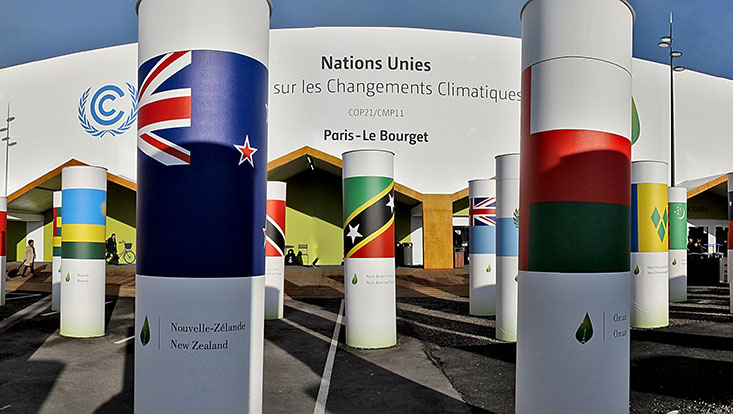Urban climate: How can we find the most comfortable spots?
17 December 2018, by Jana Fischereit CEN Universität Hamburg

Photo: Bernd Sterzl_pixelio.de
Newly paved, with new benches, a handful of trees – yet the large plaza is usually empty, even when the sun is shining. Another spot, just around the corner: here all the benches are full, the people enjoy spending time there. What explains the difference? It could be the great view or the historical buildings – or the “thermal comfort” factor. The subjective temperature is an important component in determining how popular a given place is.

As an urban climate researcher, one of my goals is to identify when a place is considered to have a comfortable temperature – and the role of architecture in this regard. Whenever a place is renovated or redesigned, the local meteorological conditions change – and with them, the thermal comfort for visitors. At Universität Hamburg’s Center for Earth System Research and Sustainability (CEN) we have developed a computer model that can precisely simulate entire cities, allowing us to test the potential effects of planned changes in advance. For example, the model can portray a given part of Hamburg three-dimensionally. In fact, it’s so accurate that it can calculate the wind at a given corner, or the temperature of a specific house front. New buildings, walls or trees can be fed into the model, so as to predict their effects.
But how do I assess whether or not these effects feel good for people? The first step is to factor in humans’ sense of temperature, together with the complex heat balance of the human body. Around the world, 165 indices have been developed for this purpose, and they take into account a wide range of factors. In Canada, for instance, the Humidex is frequently used; combining humidity and temperature, it’s best suited for dealing with heat. But what I’m looking for is an index that can cover temperatures from -5 to +35 degrees Celsius – so it can be used in as many places around the globe as possible.
Other indices have been designed for working in blast furnaces or mines, but can’t be used outdoors because, for instance, they don’t consider the effects of sunlight. In short, a total of eleven criteria have to be met in order to accurately calculate the subjective temperature in a city using a computer model. So which indices are up to the task? To find that out, I conducted the first-ever systematic assessment of all 165 of them.
First of all, it’s important that the index in question be able to accurately depict the heat balance of the human body: because whether we feel warm or cold doesn’t depend on the air temperature alone. When we move from the shade into the sun, we immediately feel the warmth, because our bodies directly absorb the radiation. But air can’t do that; it is warmed indirectly by the warm soil and heat from the outer walls of houses – and therefore much more slowly. The difference between the air temperature and our own “felt” temperature can be as much as ten degrees – a major effect! Other elements include wind, humidity, what clothes we’re wearing, and how we’re moving. The ideal index has to include all of these factors.
My analysis has considerably narrowed down the number of suitable indices – and could be a real help for other researchers working on this topic: of the 165, only four are good candidates when it comes to thermal comfort.
And under which conditions do people feel the most comfortable? For us meteorologists, the following rules of thumb apply: there shouldn’t be any strong gusts of wind, though a mild breeze can be pleasant, especially on warm days. Deciduous trees are ideal sources of shade in summer, though they naturally block less sunlight in winter. A given place is optimally designed when it offers as many different thermal conditions as possible in a comparatively small space. With the right index, this can now be calculated for cities worldwide.
Jana Fischereit is a meteorologist at the CEN, and is pursuing research on micro-scale computer models for urban climates.
This article was first published as a guest article in the Hamburger Abendblatt as part of a monthly series on climate research. Here you can find more articles of the series.


